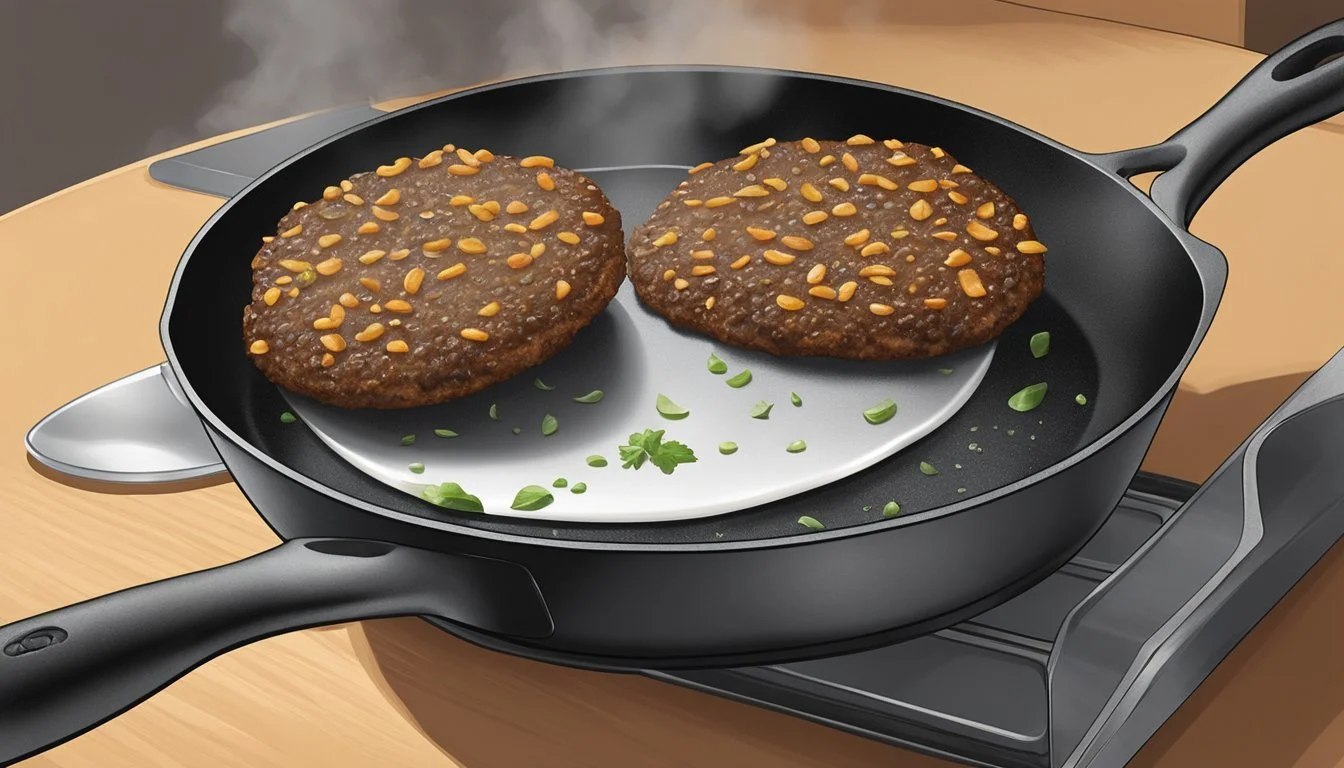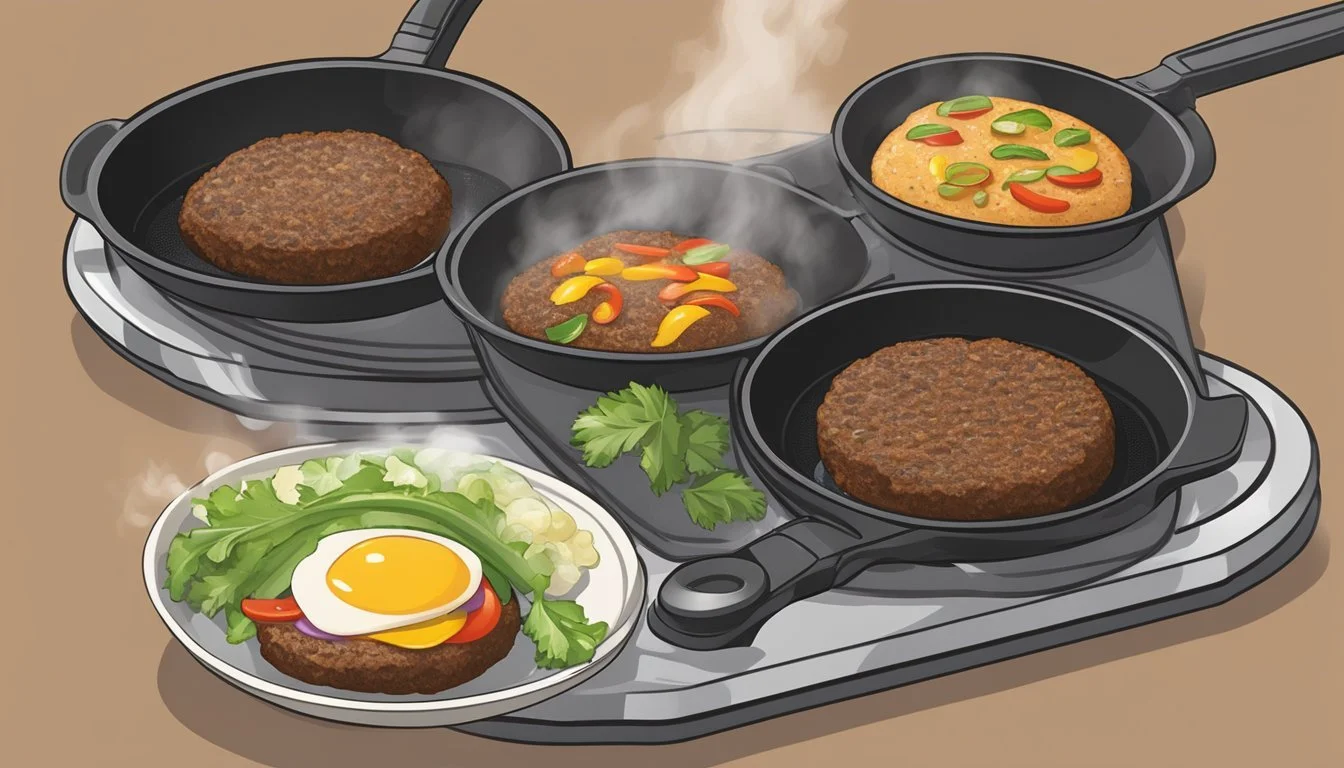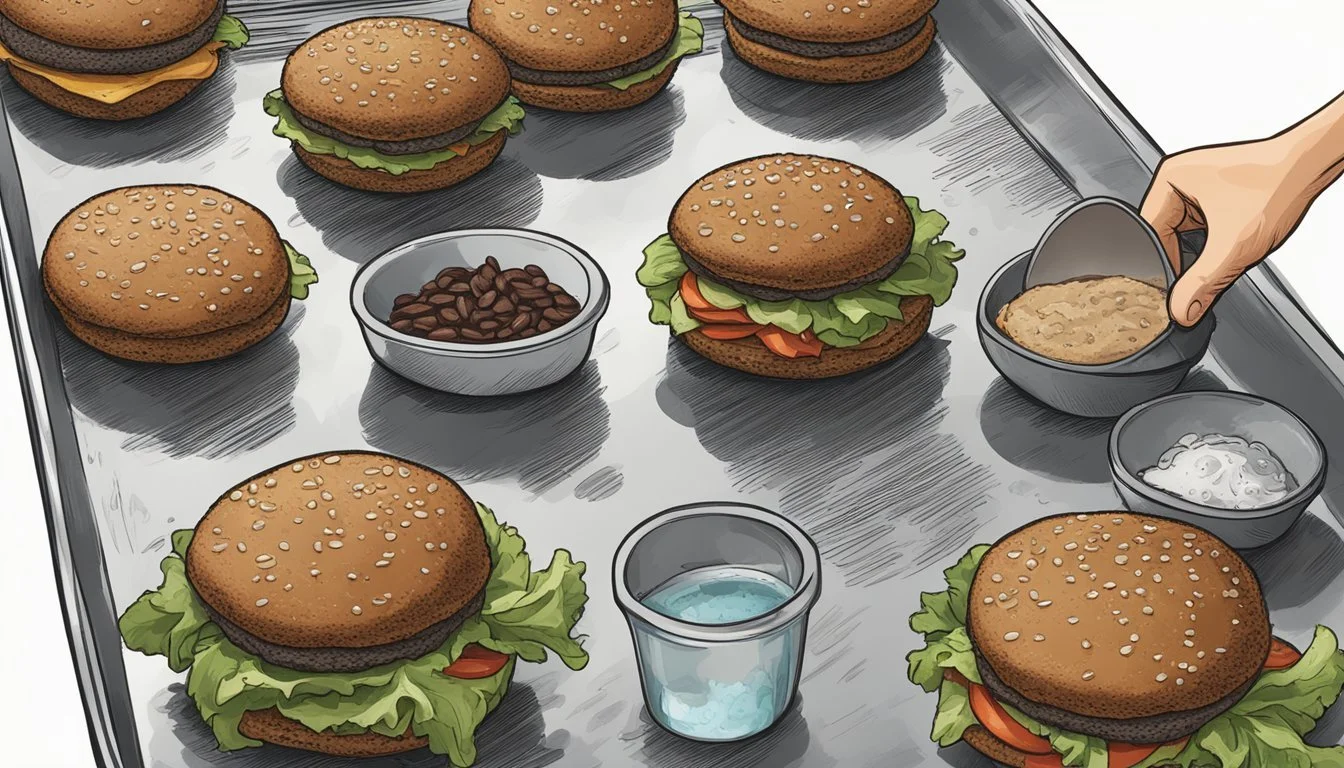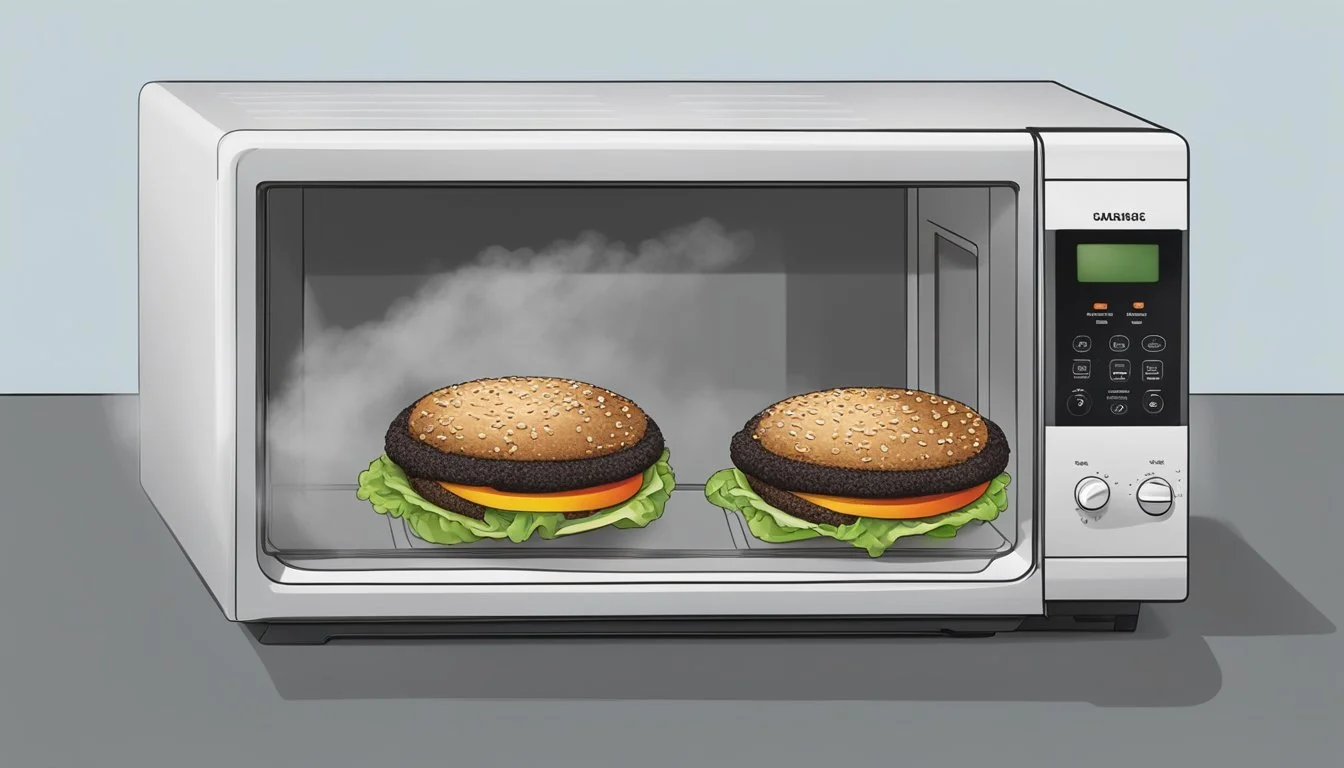Best Way to Reheat Black Bean Burgers
Tips for Maintaining Moisture and Flavor
Reheating black bean burgers while preserving their moisture, texture, and flavor can be seen as an art in the culinary world, especially since these vegetarian delights are notorious for drying out when not heated properly. Ideal reheating methods take into account the delicate balance of bringing the patty back to a palatable temperature without sacrificing its inherent juiciness. While a black bean burger's ingredients set it apart from traditional meat-based patties, ensuring that it remains succulent upon reheating is just as crucial for an enjoyable eating experience.
Preserving the integrity of a black bean burger's taste profile requires gentle reheating techniques. An oven is often recommended as it uniformly warms the patty, reducing the risk of overcooking which can lead to a dry texture. The process typically involves preheating an oven and placing the patty on a metal rack over a baking sheet, allowing for optimal heat circulation. This ensures the center is adequately heated without drawing out too much moisture. Wrapping the burger in foil is a common practice to retain moisture during the reheating process. Additionally, adding cheese or moist toppings during the latter part of reheating can enhance the flavor and juiciness of the black bean burger.
Understanding Black Bean Burgers
Black bean burgers are a popular alternative to traditional meat patties, offering a flavorful and protein-packed option for vegetarians and meat-eaters alike. They consist of a unique blend of ingredients that contribute to their texture and taste, and proper storage is key to maintaining their quality.
Components of a Black Bean Burger
The basic components of a black bean burger include:
Black beans: The main ingredient offering a soft texture and rich flavor.
Onions and spices: These add depth of flavor and can range from basic salt and pepper to more complex spice blends.
Breadcrumbs: They give structure and help bind the patty together.
Egg: Often used as a binding agent to ensure the burger maintains its shape.
Optional add-ins like cheese can be included for additional flavor.
Texture and Flavor Profile
A black bean burger typically has a moist interior with a slightly crisp exterior when cooked correctly. The flavor profile can vary but often features a savory taste with a hint of spice from the onions and other spices used. Some variations might include:
Mild: Just using salt, pepper, and garlic for a subtle taste.
Bold: Incorporating cumin, chili powder, or hot sauce for a kick.
Storing Black Bean Burgers
Storage is crucial for keeping black bean burgers fresh:
Refrigeration:
Uncooked patties can be refrigerated for up to 2 days.
Cooked burgers should be stored in an airtight container and can last for 3-5 days.
Freezing:
Place cooked patties on a baking sheet to freeze individually, then transfer to a freezer-safe bag or container.
They can be frozen for up to 3 months.
Properly stored burgers retain their texture and flavor, making them just as enjoyable when reheated as when they were first made.
Pre-Reheating Preparation
Proper pre-reheating preparation is essential for black bean burgers to retain moisture and flavor. The following steps should be meticulously undertaken to ensure the optimal reheating of black bean burgers.
Bringing Burgers to Room Temperature
Before reheating, one should allow black bean burgers to sit out until they reach room temperature. This process reduces the reheating time and promotes even heating throughout the burger. The room temperature phase should ideally last for about 30 minutes before proceeding with the reheating method.
Key Points:
Let burgers rest outside the refrigerator for 30 minutes.
Ensures an even distribution of heat during reheating.
Moisture Preservation Techniques
To keep black bean burgers moist during the reheating process, one should employ moisture-preserving techniques. A simple method involves draping a lightly dampened paper towel over the burger before heating; this provides enough moisture to prevent drying out. Additionally, a light brushing of oil can aid in moisture retention and add a slight crispness to the exterior. However, any condiments should be added after reheating to maintain texture and taste.
Moisture Preservation Practices:
Cover with a damp paper towel: lock in moisture during reheating.
Lightly brush with oil: olive or vegetable oil can help maintain juiciness and add flavor.
By adhering to these preliminary steps, one will ensure that their black bean burgers are heated gently and maintain their intended taste and texture.
Reheating Methods
Reheating black bean burgers while maintaining their moisture and flavor can be easily achieved using several techniques. Each method has its own set of steps to ensure that the burgers are evenly heated without drying out.
Oven Method
Preheating the oven is the first critical step. One should set the temperature to 400°F (200°C) for optimal results. The black bean burger should be placed on a metal rack over a baking sheet to catch any drippings. It's advisable to cover the burger with foil to retain moisture during the process. Burgers typically need to reheat for approximately 3-10 minutes, depending on their size and thickness.
Stovetop Method
For those preferring the stovetop, a skillet offers excellent heat distribution. First, preheat the skillet over medium heat. One may add a small amount of oil or water to the skillet to aid in keeping the burger moist. Place the burger in the skillet, cover with a lid or foil, and allow it to reheat for a few minutes on each side.
Microwave Method
This method is the quickest. Placing the black bean burger on a microwave-safe plate and covering it with a damp paper towel can help maintain its moisture. Reheat in the microwave on medium power in 30-second intervals, checking for doneness after each interval to avoid overcooking.
Air Fryer Method
An air fryer provides a way to reheat burgers that can keep them crispy on the outside and moist inside. Preheat the air fryer to 350°F (175°C). Place the black bean burger in the basket, ensuring there's space around it for air circulation. Reheat for about 3-4 minutes. Lightly brushing the patty with oil before reheating can also help to keep it flavorful and moist.
Additional Tips for Enhancing Flavor
Properly reheated black bean burgers can be further enhanced in flavor with thoughtful selection of condiments, toppings, and the right accompaniments. The condiments and toppings should complement the burger's natural savoriness, while the bun and sides can elevate the eating experience.
Ideal Condiments and Toppings
Sauces: Bold and tangy sauces can add moisture and enhance the flavor. Consider homemade or high-quality store-bought options such as:
Chipotle mayonnaise
Avocado-lime dressing
Spicy ketchup
Vegetables: Fresh or grilled vegetables provide texture and freshness. Favorites include:
Crisp lettuce
Slices of ripe tomato
Grilled onions, for a touch of caramelized sweetness
Cheese: A slice of cheese can add a rich, creamy element. Choices with strong ratings for flavor include:
Sharp cheddar
Smoked gouda
Pepper jack, for a spicy kick
Seasonings: A pinch of salt or a crack of pepper right before serving can brighten the burger's taste.
Pairing with the Right Bun and Sides
Buns:
Whole-grain buns can add a nutty flavor and a sturdy texture.
Brioche buns offer a buttery sweetness that balances the heartiness of the burger.
Toasting the bun enhances its flavor and prevents sogginess.
Sides:
A side of sweet potato fries can complement the burger with their subtle sweetness.
A crisp side salad dressed with a vinaigrette adds brightness and can balance the heaviness of the burger.
Customizing Your Reheat
Reheating black bean burgers involves more than just restoring their warmth; it's a chance to reintroduce moisture and flavor that may have been lost after initial cooking. Here's how one can tailor the reheating process to suit both alternative burger compositions and individual taste preferences.
Adjusting for Veggie and Meat Alternatives
To ensure that veggie burgers, especially those made from black beans or other plant-based proteins, retain their moisture and texture, careful heat management is essential. Here's a suggested method:
Temperature: Heat the oven to 350°F for veggie burgers. For meat alternatives that mimic the texture of real meat, a slightly higher temperature (around 375°F) can be used.
Heating Surface: Place the patty on a wire rack set over a baking sheet; this allows hot air to circulate around the burger, reheating it evenly.
Moisture Retention: Covering the burger with foil can help retain moisture. For added juiciness, one can introduce moisture by adding a few tablespoons of water or vegetable broth on the baking sheet.
Avoid overheating as plant-based proteins and veggies can dry out quickly. The goal is to heat them through just enough to make them palatable without compromising their integrity.
Experimenting with Spices and Seasonings
When it comes to seasoning, one has several options to enhance the flavor profile of reheated black bean burgers:
Spices: Introducing spices during the reheating process can infuse the burger with a more intense or varied flavor. One might consider cumin, smoked paprika, or chili powder for a warm, smoky note.
Garlic and Seasoning: Fresh garlic can overpower other flavors when reheated, so it's advisable to use garlic powder to gently enhance the taste. Additionally, a light sprinkle of salt or a seasoning blend can elevate the overall savoriness of the burger.
In both cases, moderation is key, as adding too many spices or seasonings can overwhelm the natural flavors of the burger. Experimenting with different combinations in small increments allows for the discovery of the perfect blend that complements the black bean burger without dominating it.
Safety Considerations in Reheating
When reheating leftover black bean burgers, maintaining food safety is crucial. The key is to prevent bacterial growth by ensuring the burgers reach the right temperature and are heated evenly.
Preventing Bacteria Growth
Bacteria can thrive in the "danger zone" between 40°F (4°C) and 140°F (60°C). To prevent bacterial growth:
Refrigerate leftover burgers within two hours of cooking.
Use a food thermometer to ensure that the internal temperature of the burger reaches at least 165°F (74°C) during reheating.
Ensuring Even Heating
To avoid cold spots where bacteria can survive, one should ensure even heating:
Cut the burger into even-sized pieces, if necessary.
If using a microwave, stop midway to stir or flip the burger pieces.
On the stove, reheat at a medium temperature and stir frequently.
Make Ahead and Freezing Options
Proper storage techniques are essential for maintaining the quality of make-ahead black bean burgers; knowing how to freeze and thaw them ensures long-lasting freshness and flavor.
Best Practices for Make-Ahead Burgers
For those who prefer to prepare black bean burgers in advance, the burgers can be mixed and shaped into patties, then stored in the refrigerator. This step allows the flavors to meld together and can save time on busy days. When making the burgers ahead of time, it's important to:
Store the uncooked patties in an airtight container.
Keep the patties refrigerated for no more than 2-3 days before cooking.
Freezing and Thawing for Optimal Quality
Freezing black bean burgers provides a longer-term storage option and is easy to do. To freeze the burgers:
Cook the black bean burgers as per the recipe.
Allow the burgers to cool completely to avoid ice crystal formation.
Arrange the burgers in a single layer on a baking sheet.
Place the baking sheet in the freezer until the burgers are frozen solid (about 3-4 hours).
Once frozen, transfer the burgers to a freezer-safe container or bag.
Remove as much air as possible and label the container with the date.
When ready to enjoy the burgers, thaw them properly to retain moisture and flavor:
Thaw in the refrigerator overnight or
Use the microwave to defrost them if you're short on time.
Ensuring they are heated through before serving is crucial to enjoying a black bean burger that is both moist and flavorful.
Serving and Presentation
Reheated black bean burgers can be as delightful as freshly cooked ones when presented with the right techniques and accompaniments. The aim is to enhance both the flavors and visual appeal to ensure a satisfying dining experience.
Plating Techniques
Balance and Symmetry: Place the black bean burger at the center of the plate. It should be the star of the dish and draw the diner's eye immediately.
Contrast with Garnishes: Contrast the dark tones of the burger with bright greens or colorful condiments. A light drizzle of sauce can add both flavor and visual appeal.
Burger Buns: Warm the burger buns separately to maintain their texture. When plating, ensure they are lightly toasted to offer a satisfying crunch that complements the moist patty.
Combining with Complementary Dishes
Side Dishes: Offer a variety of sides such as a simple salad or roasted vegetables. The freshness of these sides can counterbalance the hearty flavor of the burger.
Salad Incorporation: When opting for a lighter meal, one can serve the black bean burger over a bed of crisp greens. This can elevate the dish by introducing diverse textures and flavors without heavy carbs.
Condiments and Toppings: Provide a selection of condiments to allow customization. Classic choices include mustard, ketchup, or a homemade aioli. Fresh toppings like avocado can offer creaminess and a boosted rating for overall taste.
By taking these serving and presentation aspects into account, one not only preserves the integrity of the reheated black bean burger but also ensures an enjoyable eating experience that is as inviting as it is delicious.
Conclusion
When reheating black bean burgers, preservation of moisture and flavor are paramount. The reheating process should be approached with confidence, incorporating tested methods that ensure the burgers maintain their satisfying consistency. Not all techniques are equal, but adhering to a few best practices dramatically improves the outcome.
Oven Method:
Preheat oven to 350-400°F.
Place burger on a rack over a baking sheet.
Consider wrapping in foil to retain moisture.
Heat for 3-10 minutes.
Stovetop Method:
Warm pan on medium heat.
Add a small amount of oil.
Place burger in the pan, stirring occasionally.
Heat thoroughly, retaining consistency.
Each method aims to deliver a reheated burger that is as enjoyable as when it was first made. Chefs and home cooks alike can execute these techniques with assurance, knowing they have been crafted to deliver the best possible results. It is crucial to monitor the burgers during reheating to prevent over-drying.
With these guidelines, reheating black bean burgers to a state that rivals their freshly-cooked counterparts is within reach, satisfying both the palate and the desire for a dish that showcases thoughtful preparation.








